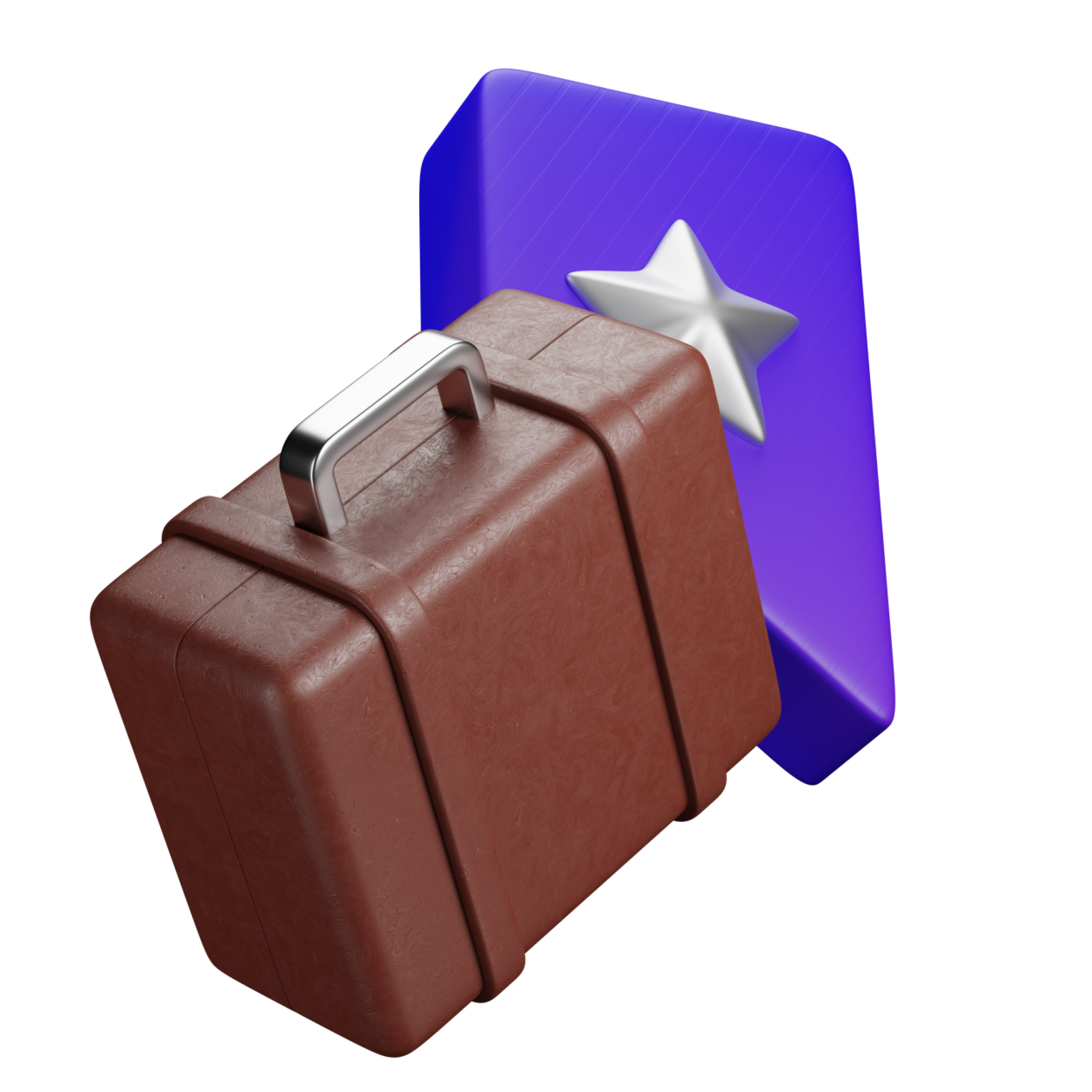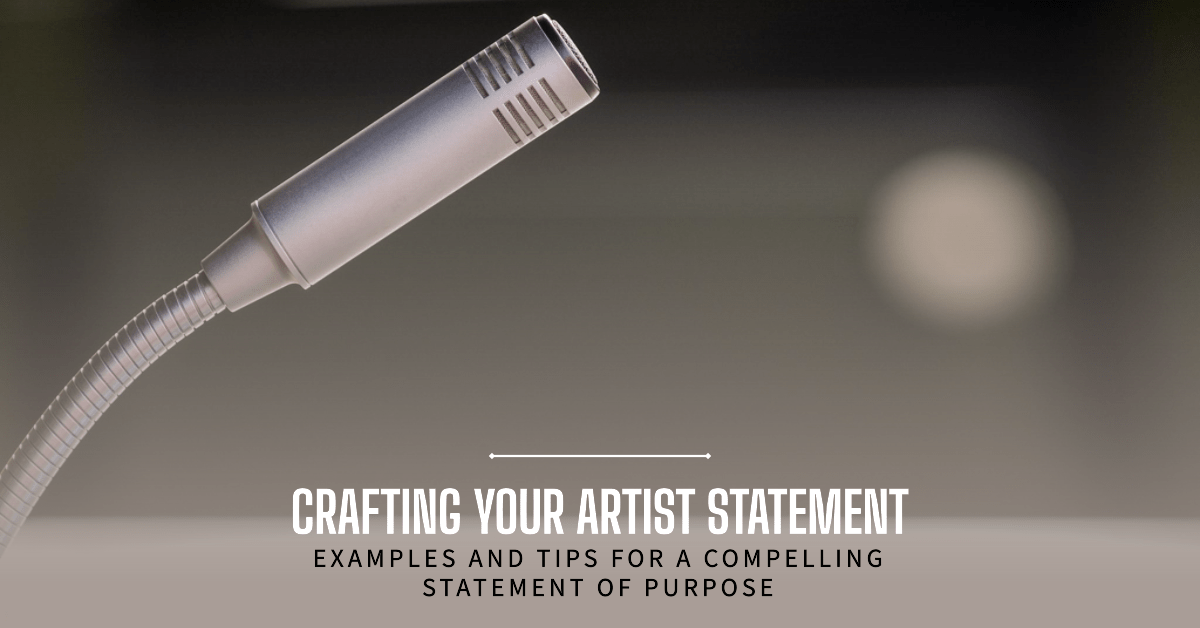
Guidance from our top admission experts — for free!

- Admit Finder
Discover Past Admits, Gauge Your Chances!
- Shortlist Builder
Personalized University Picks, Just a Click Away.
- Course Finder
Navigate Global Courses Tailored for You
- Scholarship Finder
Unlock Funding Opportunities Worldwide.

Get tailored study abroad advice.

Sign in for exclusive content!

Planning to study abroad?

Build your target shortlist and see your odds of getting into top schools with Ambitio's AI shortlist builder!

Heading Out Already?
Our Ivy League mentors and top admission experts can help with personalized tips to get you into your dream school
6 minutes read

Artist Statement of Purpose Examples: Crafting Your Fine Art Personal Statement
Dirghayu Kaushik
19 August 2024

When it comes to pursuing a career in fine art, a well-crafted artist statement of purpose can be your ticket to success. Whether you’re applying for an MFA, BFA, or a position in the art world, your personal statement holds the key to showcasing your passion, creativity, and dedication.
In this comprehensive guide, we will dive deep into artist statement of purpose examples, helping you understand how to articulate your love for art effectively and create a compelling personal statement.
Worried about the cost of Studying Abroad?
Sign up to access 25 game-changing scholarships that could cover your costs.
- The Importance of a Personal Statement
Your personal statement, often interchangeably referred to as a statement of purpose (SOP), is your opportunity to tell your unique story as an artist. It allows admissions committees or potential employers to get to know you beyond your portfolio or resume.
Your personal statement should convey your artistic journey, influences, experiences, and future aspirations. It’s a chance to make a lasting impression and demonstrate why you are a perfect fit for your chosen fine art program or career in the art world.
Stuck on How to Pick Your Ideal College?
Sign up to access your tailored shortlist and simplify finding your ideal college.
- Crafting a Captivating Introduction
Personal Statement
Your personal statement should begin with a captivating introduction that immediately grabs the reader’s attention. Think of it as the opening scene in a captivating movie. Here’s an example:
“Art has always been my muse, guiding my life’s path towards creative expression. From the moment I held a paintbrush, I knew that art was more than just colors on a canvas; it was a form of storytelling, a means to connect with the world and express the deepest facets of my being.”
Expressing Your Love for Fine Art
Your introduction should convey your deep-seated love for fine art. You can talk about when and how your passion for art first ignited. Maybe it was a childhood memory of visiting an art museum, or perhaps you had an inspiring art teacher who encouraged your creativity. Sharing this personal connection with art can draw readers into your narrative.
Defining Your Artistic Identity
In the introduction, you should also touch upon what makes your artistic identity unique. What sets you apart as an artist? Do you have a signature style, technique, or theme that defines your work? This is the time to provide a glimpse into what makes your art special.
See how Successful Applications Look Like!
Access 350K+ profiles of students who got in. See what you can improve in your own application!
- Sharing Concrete Examples of Your Work and Experiences
Statement Examples
Once you’ve captured your reader’s attention with a compelling introduction, it’s time to delve into the heart of your personal statement by sharing concrete examples of your work and experiences. This section should showcase your artistic journey and demonstrate your dedication to your craft.
Highlighting Artistic Milestones
In this section, you can mention significant milestones in your artistic journey. These could include exhibitions, awards, or collaborations that have shaped your development as an artist. For instance:
“Over the years, I have had the privilege of showcasing my work in prestigious galleries and museums, such as the Tate Modern in London. These opportunities not only exposed my art to a wider audience but also pushed me to constantly evolve as an artist.”
By highlighting these achievements, you demonstrate your commitment to your art and your ability to thrive in the competitive art world.
Discussing Artistic Influences
Artists are often inspired by the work of others. Share the artists or artworks that have influenced your creative process. You might mention famous painters, sculptors, or contemporary artists whose work resonates with you. Explaining how these influences have shaped your artistic perspective can provide insight into your unique approach to art.
Detailing Your Educational Background
If you’ve pursued formal education in fine art, whether it’s an undergraduate degree, a BFA, or an MFA, this is the place to discuss it. Talk about your academic journey, the courses that had a profound impact on you, and any mentors who guided your artistic growth. Be sure to convey how your education has contributed to your development as an artist.

Start Your University Applications with Ambitio Pro!
Get Ambitio Pro!
Begin your journey to top universities with Ambitio Pro. Our premium platform offers you tools and support needed to craft standout applications.
Unlock Advanced Features for a More Comprehensive Application Experience!

Start your Journey today
- Exploring Specific Interests and Influences
Art and Design Personal Statement
Art is a vast and diverse field, and this section allows you to explore your specific interests and influences in greater detail. Whether you’re passionate about painting, sculpture, graphic design, or any other art form, here’s where you can delve into the heart of your creative focus.
Passion for a Specific Art Form
Share your deep-seated passion for your chosen art form. Explain why you are drawn to it and how it allows you to express yourself. For example:
“My fascination with seascapes and the fragility of nature has been a recurring theme in my work. It’s a subject that allows me to explore the vastness and immensity of the natural world while conveying its fragility.”
Artistic Inspirations
Discuss the artists or movements that have had a profound impact on your work within your chosen art form. Whether it’s the abstract expressionism of Jackson Pollock or the precision of Renaissance art, detailing these influences adds depth to your personal statement.
Your Creative Process
Take the reader on a journey through your creative process. How do you approach your work? Do you start with sketches, embrace spontaneity, or meticulously plan each piece? Sharing your process can provide insight into your artistic mindset.
- Articulating Your Goals and Aspirations
Fine Art Personal Statement
Your personal statement should not only reflect on your past but also look to the future. What are your artistic goals and aspirations? Where do you see yourself in the art world? This section allows you to articulate your vision and ambition as an artist.
Short-Term Goals
Discuss your immediate goals within the art world. Whether it’s participating in specific exhibitions, collaborating with fellow artists, or mastering a new technique, these short-term objectives reveal your drive and commitment.
Long-Term Aspirations
Take a broader view and share your long-term aspirations. Do you dream of curating your own gallery, teaching art to the next generation, or becoming an internationally recognized artist? Expressing these ambitions paints a vivid picture of your future in the art world.
Why This Program or Career?
If you’re applying to a specific program, be it an MFA or a job opportunity, explain why it’s the perfect fit for your artistic journey. Mention how the program’s curriculum, faculty, or mission align with your goals.
- Tailoring Your Statement for MFA and BFA Applications
MFA and BFA
Depending on whether you’re applying for a Master of Fine Arts (MFA) or a Bachelor of Fine Arts (BFA) program, there are specific elements to emphasize in your personal statement.
MFA Program Emphasis
For MFA applicants, emphasize your commitment to furthering your craft and the advanced level of artistry you bring to the table. Discuss your readiness for the intensive program and your eagerness to engage in critical discourse with fellow artists.
“Enrolling in the MFA program at [University Name] is a natural step in my journey to become a professional artist. I am ready to immerse myself in a community of dedicated artists, engage in rigorous critiques, and push the boundaries of my creative practice.”
BFA Program Emphasis
Similarly, BFA applicants should convey their passion and readiness to embark on their educational journey. Highlight your enthusiasm for learning and your willingness to explore various aspects of fine art.
“I am eager to embark on the BFA program, where I can continue to refine my graphic design and photography skills. This program’s focus on nurturing emerging artists aligns perfectly with my goals of honing my craft and exploring new artistic horizons.”
- Showcasing Your Love for Art History
Art History
For those with a passion for art history, your personal statement should reflect your deep love for the subject and your desire to explore its intricacies.
Unearthing Art Historical Insights
Share your favorite periods, artists, or art movements within the scope of art history. Discuss why you find these aspects particularly fascinating and how they have influenced your perspective.
“Art history has been my guiding light in understanding the evolution of artistic expression. I am particularly captivated by the Romantic period and its emphasis on emotion, individualism, and nature, as seen in the works of artists like Caspar David Friedrich.”
Academic Pursuits
If you’re applying for graduate studies in art history, discuss your academic interests and the areas of art history you wish to explore further. Mention any research projects, papers, or presentations that showcase your dedication to the field.
“ During my undergraduate studies, I delved into the complexities of American art history. My thesis on the impact of Abstract Expressionism on post-war American society was a testament to my commitment to scholarly pursuits in this field .”
- Conclusion: Crafting Your Artistic Narrative
Crafting a compelling artist statement of purpose is an art form in itself. By drawing inspiration from these examples and infusing your personal experiences, you can create a statement that reflects your passion for fine art.
Remember, your personal statement is your opportunity to shine and convey why you are a perfect fit for your chosen fine art program or career in the art world.
In closing, let your personal statement be a testament to your love for art and your unwavering commitment to the world of creativity. Use it as a canvas to paint your story, one brushstroke at a time, and let your passion shine through every word. Your artistic journey begins with your statement of purpose, so make it a masterpiece.
With this comprehensive guide, you now have the tools and inspiration to craft a personal statement that leaves a lasting impression and sets you on a path toward success in the world of fine art. Embrace your creativity, share your story, and let your love for art guide you on this incredible artistic journey.
What should I include in my artist statement of purpose?
Your statement should cover your artistic journey, influences, experiences, and future aspirations. Use concrete examples to illustrate your passion for fine art.
How long should my personal statement be?
Aim for a concise statement, typically around 500-800 words. Be sure to follow any specific word limit guidelines provided by the institution or program.
Can I use samples of my work in my statement?
Absolutely! Including images or descriptions of your work can add depth to your statement and showcase your artistic abilities.

Should I mention specific artists or artworks that inspire me?
Yes, mentioning artists or artworks that have influenced you can provide insight into your artistic perspective and passion.
How important is the artist statement in the application process?
Your personal statement is a crucial component of your application. It allows admissions committees to understand your unique voice, passion, and suitability for their program.
Spread the Word!
Share across your social media if you found it helpful

Table of Contents
- • The Importance of a Personal Statement
- • Crafting a Captivating Introduction
- • Sharing Concrete Examples of Your Work and Experiences
- • Exploring Specific Interests and Influences
- • Articulating Your Goals and Aspirations
- • Tailoring Your Statement for MFA and BFA Applications
- • Showcasing Your Love for Art History
- • Conclusion: Crafting Your Artistic Narrative
Build your profile to get into top colleges
Phone Number
What level are you targetting
Almost there!
Just enter your OTP, and your planner will be on its way!
Code sent on
Resend OTP (30s)

Your Handbook Is Waiting on WhatsApp!
Please have a look, and always feel free to reach out for any detailed guidance
Click here to download
Meanwhile check out your dashboard to access various tools to help you in your study abroad journey

Related Blogs

3 Event Manager Personal Statement Samples

How to write a Graduate Medicine Personal Statement?

How To Write a Film and Media Studies Personal Statement
Find your Dream school now⭐️
Welcome! Let's Land Your Dream Admit.
Let us make sure you get into the best!
- 2024 Winter
- 2024 Spring
- 2024 Summer
Enter verification code
Code was sent to
- Our Experts
Connect with us on our social media
- Telephone Tel: +44 (0) 20 7499 2394
- Email Email: [email protected]
Strategic Guidance
- Private Oxbridge Consultation
- International Oxbridge Consultation
- Postgraduate Applications Guidance
- Book a Complimentary Call
Comprehensive Support
- The Premier Service
- Oxford and Cambridge Interview Preparation Weekend (2024 is Fully Booked)
Targeted Support
- Oxbridge Personal Statement Support
- Oxbridge Admissions Test Support
- Oxbridge Interview Preparation Support
- Oxbridge Interview Preparation Day 2024
Application Guidance
- ‘Aspiring to Oxbridge’ School Talk
- Teacher Training Workshop
- Individual Guidance Consultations
Personal Statement Support
- Personal Statement Group Workshop
- Personal Statement Consultations
Admissions Test Preparation
- Admissions Test Day
- Admissions Test Course
Interview Preparation
- Interview Preparation Day
- Interview Preparation Course
Free Library
- Oxbridge Interview Resources
- Admissions Tests Resources
- Student Library
- Webinar Library
Our Publications
Course reports, oxbridge applications.
- Become A Tutor
- Our Offices
- Dukes Education
News & Press
- Widening Access
- Publications
- Sign In Register
- Sign In Register
Fine Art Personal Statement Guide
One of the most significant decisions of your adult life will be choosing where to go to university and what to study. Most of us have many and varied interests, as well as strong feelings about where’s best not only to nurture our interests but also to live while we’re doing it, so settling on a choice can be tough.
That said, you’re undoubtedly reading this because you’ve thought about what you’d like to study and maybe even concluded it will be Fine Art. Congratulations!
Once you’ve worked out where you’d like to pursue this, the next step is applying, and your personal statement is one of the most important parts of this . It’s a challenge to write because it has to cover a lot of ground in a small space, but the trick is to approach it methodically and to tackle it systematically.
This guide will help you to achieve this by taking you through the following steps, so you end up with a compelling and informative personal statement:
- Why are Personal Statements Important?
- What Should I Include in a Fine Art Personal Statement?
- What Should I Avoid in a Fine Art Personal Statement ?
- Advice on How to Start a Fine Art Personal Statement
- Advice on How to Finish a Fine Art Personal Statement

What Should I Avoid in a Fine Art Personal Statement ?
Don’t begin your statement with a sweeping comment about art’s universality, or with a quotation from an artist or critic. This sort of opening adds nothing and, in fact, negatively impacts how you come across as a potential student. Equally detrimental are any clichés about you and art, overly informal language, and dramatic statements of any sort .
You should also avoid including irrelevancies, both curricular and extracurricular, and anything too personal – this isn’t an autobiography. Remember to stay close to the subject and to express your passion for Fine Art as simply and directly as you can.
Register to access our complimentary e-book "So You Want To Go To Oxbridge? Tell me about a banana…"
Advice on How to Start a Fine Art Personal Statement
To make your statement as effective as possible, you should open it by setting out your interest in art and why you’d like to study Fine Art at university.
Clarity is key, so don’t over-complicate matters; it’s enough just to be honest and straightforward about your reasons. That said, originality and flair always make a statement more impactful, so consider how you can adopt a personal and unique angle that marks you out as different from all other applicants.
The first impression is a lasting impression, which means the reader is likely to draw some conclusions after reading the first paragraph. That means you should ensure your statement’s beginning achieves what it sets out to and that you’re happy with its portrayal of you.
Advice on How to Finish a Fine Art Personal Statement
Finishing your Fine Art personal statement can, to some extent, reflect the finishing of your Fine Art degree. By the end of three years, you’re likely to have compiled a portfolio of pieces, have exhibited one or several at a final degree show, and have undertaken an extended piece of writing.
Your statement can mention how you’re looking forward to having amassed this critical work by the end of your time at university and talk about the skills you’ll have developed along the way. The statement’s conclusion should also unite your various lines of argument concerning interest, preparedness, and motivation , so the reader feels confident in choosing you as their next student.
- What are some Tips for Writing a Strong Fine Art Personal Statement?
- How Long Should my Fine Art Personal Statement Be?
- What Kind of Extracurricular Activities Should I Include in my Fine Art Personal Statement?
- How Can I Tailor my Fine Art Personal Statement to the Oxford Course?
As you’re applying to do a thoroughly practical course, albeit one underpinned by theory, it’s recommended you talk to some extent in your statement about work you’ve created, the skills that you’ve acquired through this, and their future application to your degree. It’s also a good idea to reflect on who and what your influences and inspirations are, as this will show your awareness of how your work is impacted by that of others. No one creates art in a vacuum, so don’t be afraid to share this.
Think about what makes your work unique and how it has evolved over time. You’re more than likely to have taken inspiration from different people and places at different times, so alluding to this evolution will show you to be analytical and reflective. It’s also a good idea to mention how you respond creatively in your own work to what you see and hear elsewhere, for example through museum and gallery visits.
Your personal statement will be limited, like everyone else’s, to 4000 characters (including spaces) or to 47 lines of the UCAS form, whichever you reach first. This might seem overly restrictive for such an important application, but remember that your application will comprise other elements too, and it’s good practice for later when you have to express your thoughts succinctly in essays.
There are some obvious extracurricular activities that all Fine Art applicants will include in their statements, such as visits to exhibitions, their own artistic endeavours, and wide reading around the subject. All of these are fine, and by all means put them in. However, if you can also add something a bit more unusual, for example you helped to date a painting through mass spectrometry, or assisted with the restoration of a medieval fresco, then that will help you to stand out in a unique way. Whatever you decide to include, ensure it has some direct relevance to the application as you can’t afford to waste words on content that won’t be valued by admissions tutors.
A strong academic record and incontestable interest in art go without saying, but you should also display a capacity for taking on large amounts of information and using it judiciously for your own ends, for working independently and in collaboration with others, and for extensive reflection on your own work.
Finally, being at ease with the theory as much as the practice of art is paramount as you’ll be expected to use the one to inform the other as you progress through the course.
Book your Fine Art Personal Statement Package
You can contact our Oxbridge-graduate Consultants on +44 (0) 20 7499 2394 or email [email protected] to discuss our personal statement packages.
If you’d like to know more about Fine Art, we have admissions test guidance and interview preparation readily available.
Our Oxbridge-graduate consultants are available between 9.00 am – 5.00 pm from Monday to Friday, with additional evening availability when requested.
- Tel: +44 (0) 20 7499 2394
- Email: [email protected]
Oxbridge Applications, 58 Buckingham Gate, London, SW1E 6AJ
- Private Oxbridge Application Consultation
- Oxbridge Personal Statement Support Package
- Oxbridge Mock Interview Preparation and Support
- Personal Statement Workshop and Checks
- Schools Mock Interviews – Online and In-School
- Teacher Training Workshops – Online and In-School
- Oxbridge Preparation Days – Online and In-School
- Frequently Asked Questions
- Terms and Conditions
- Privacy Policy
- Safeguarding & Child Protection
- Company Registration Number: 3757054
Recently Updated Blogs
Blog scholarships for international students applying to uk universities, blog what to expect in your oxbridge interview, blog can i prepare answers for my oxbridge interviews, blog how to prepare for unseen materials in your oxbridge interviews, blog how can i make last-minute improvements to my admissions test performance, choosing a college, a slippery question, added to cart.
